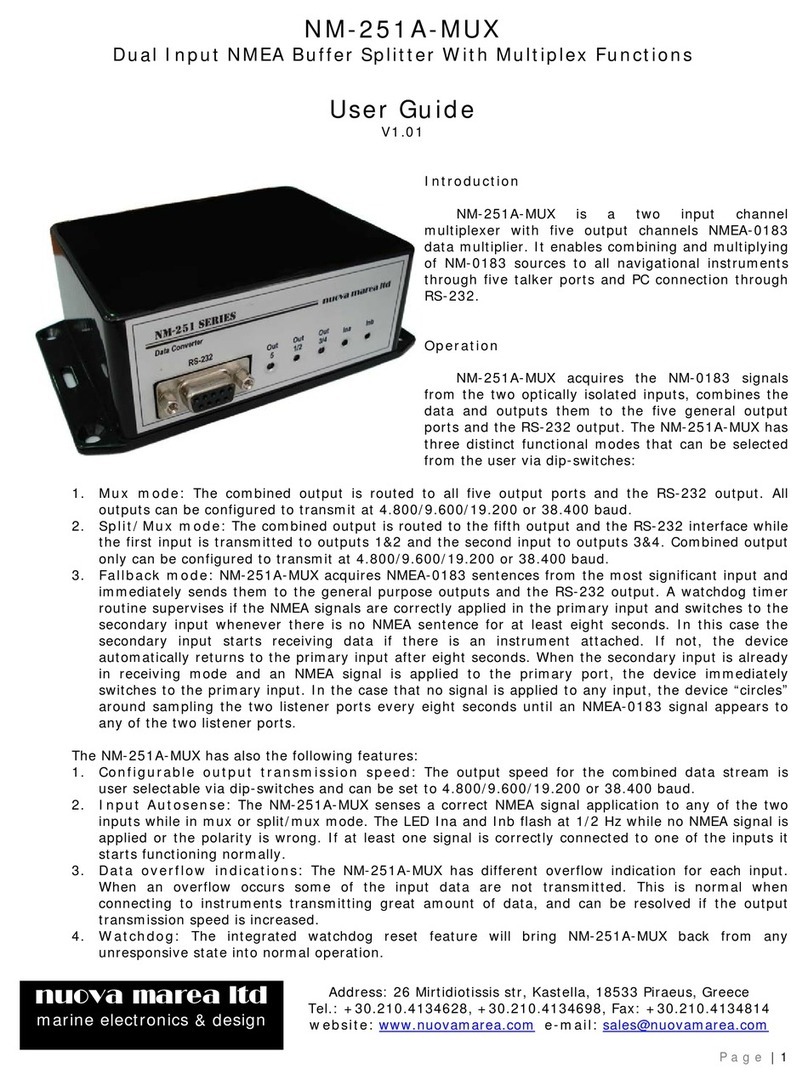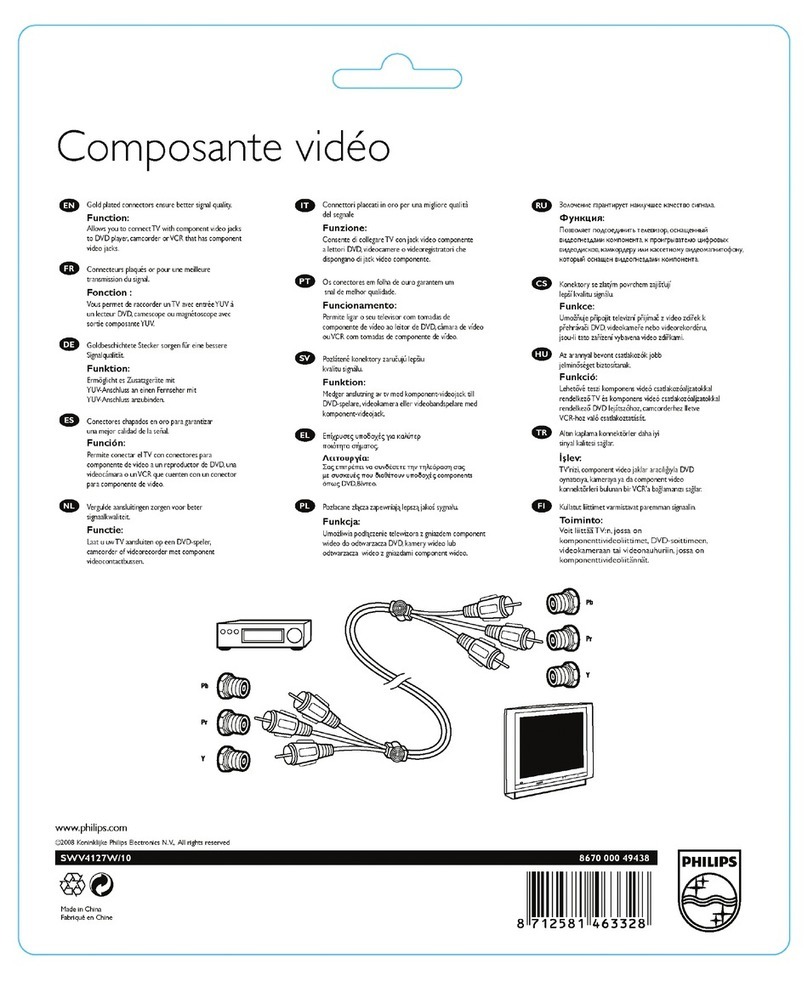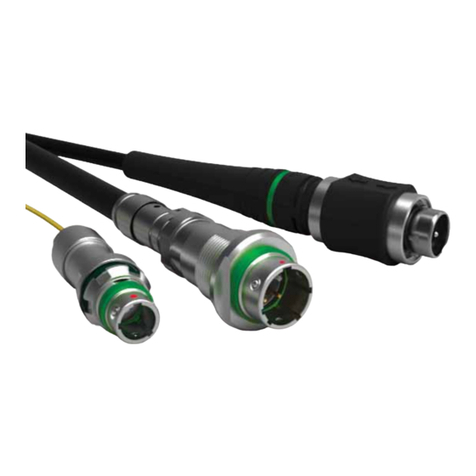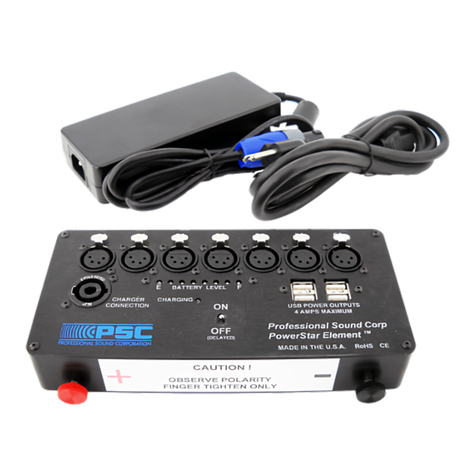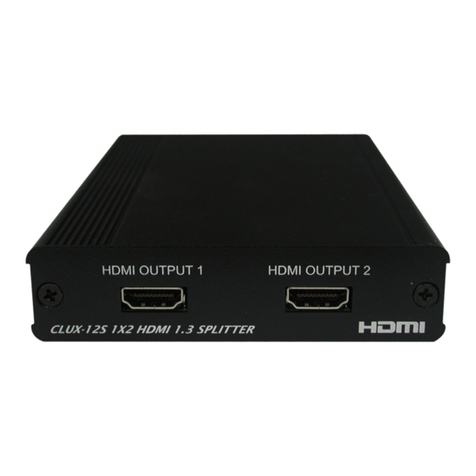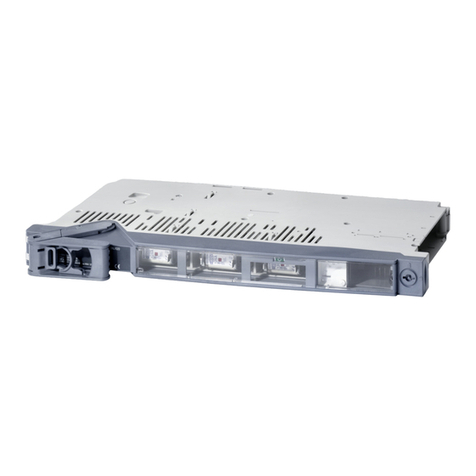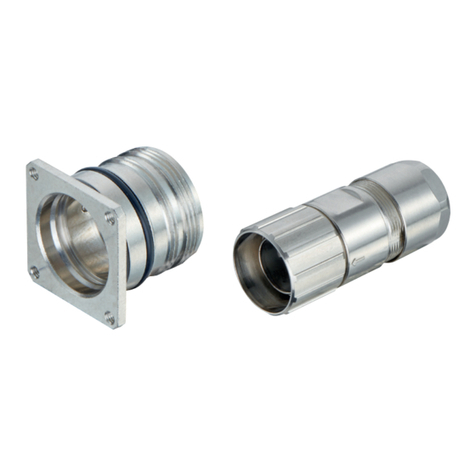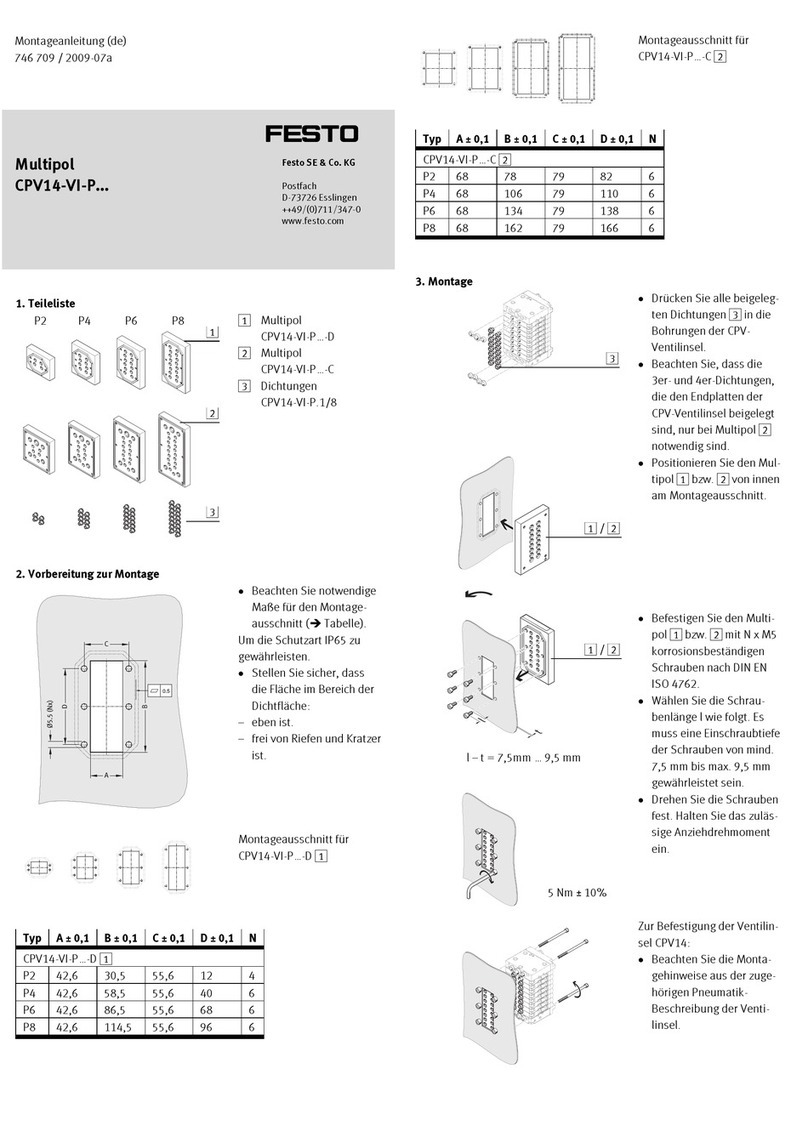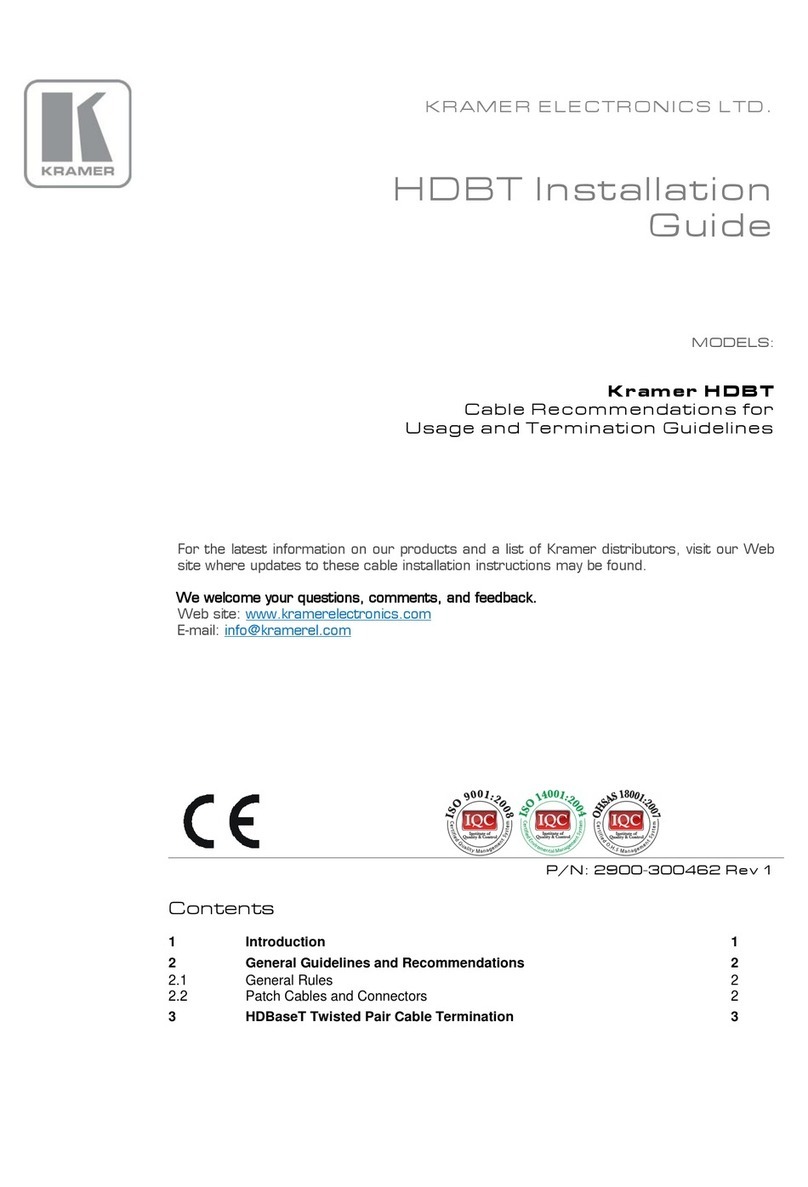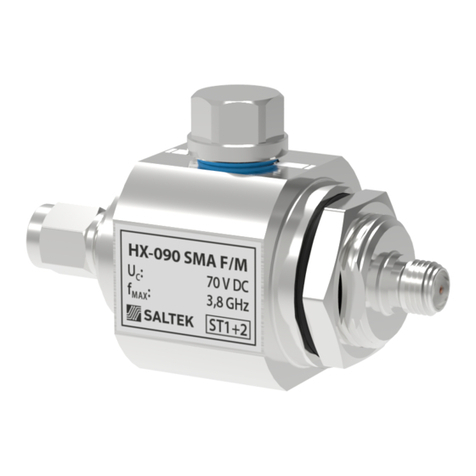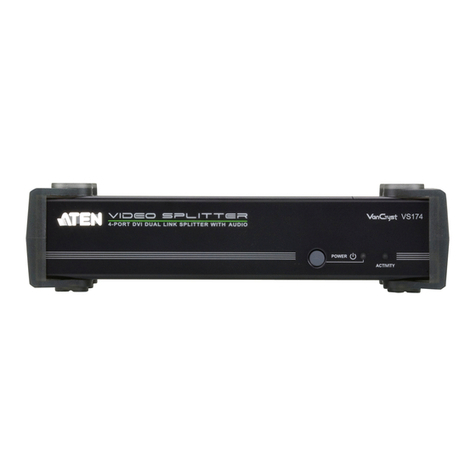Mychanic 52752 User manual

Operating Instructions for Model 52752 Booster Cable Reel
4 Gauge, 20’ Booster Cable
Thank you for purchasing your MYCHANIC® Booster Cables.
WARNING! READ AND UNDERSTAND INSTRUCTION MANUAL BEFORE USING PRODUCT. Failure to
follow all instructions listed below may result in electric shock, re and/or serious personal injury.
WARNING! Working in the vicinity of lead acid batteries is dangerous. These batteries generate explosive
gases during normal battery operation. For this reason, it is of utmost importance that you read these
instructions and follow them exactly.
Save these instructionsIMPORTANT: Safety Instructions

Wear complete eye protection and clothing protection. Avoid touching the eyes while working near battery.
General Safety
• Use only as intended for optimum performance and with less likelihood of a risk of injury
when used only at the rate for which it was designed.
• Inspect before every use; do not use if any parts or the wire coating are loose or damaged.
• Consult your automobile owner’s manual and follow all instructions.
Work Area Safety
• Avoid dangerous environments. Do not use cables in damp or wet locations or in the rain.
• Keep children, pets, and bystanders away while operating cables. Distractions can cause you
to lose control of the tool, injuring yourself or others. Protect others in the work area from
debris such as sparks. Provide barriers as needed.
• Store idle cables indoors. When not in use, cables should be stored indoors in dry and high or
locked-up places – out of reach of children.
• Do not abuse the cord. Keep cord away from heat, oil, and sharp edges.
• Do not operate power tools in explosive atmospheres, such as in the presence of ammable
liquids, gases, or dust. This tool may create sparks which may ignite the dust or fumes.
• Make sure the work area is well ventilated. Never operate in an enclosed space.
• WARNING Be extra cautious to reduce risk of dropping a metal tool onto the battery. It is
capable of producing a spark or short-circuiting the battery or other electrical parts and
causing an explosion.
Personal Safety
• WARNING! First Aid Measures: Liquid ejected from the battery may cause irritation or
burns.
o Skin: If battery acid comes in contact with skin, rinse immediately with water, then wash
thoroughly with soap and water. If redness, pain, or irritation occurs, seek immediate
medical attention.
o Eyes: If battery acid comes in contact with eyes, ush eyes immediately for a minimum of
15 minutes and seek immediate medical attention.
• Stay alert, watch what you are doing, and use common sense when operating booster cables.
Do not use cables while you are tired or under the inuence of alcohol, drugs, or medication.
A moment of inattention while operating cables may result in serious personal injury, shock, or
re.
• Dress properly. Do not wear loose clothing or jewelry. They can be caught in moving parts.
SAFETY INSTRUCTIONS

INSTRUCTIONS FOR USE
Rubber gloves and substantial, non-skid footwear are recommended when working outdoors.
Wear protective hair covering to contain long hair.
• Use safety glasses and other safety equipment. Use safety goggles or safety glasses with side
shields, complying with applicable safety standards and, when needed, a face shield. Also, use
face or dust masks if operation is dusty. This applies to all persons in the work area. Also, use
a hard hat, hearing protection, gloves, safety shoes and dust collection systems when specied
or required.
• WARNING NEVER smoke or allow a spark or ame in the vicinity of battery or engine.
Prior to Jumpstarting
This product is intended for consumer use in boosting a stalled vehicle battery only. Please use this product
as an auxiliary tool only. It can be used in emergencies, but it is recommended that you take your vehicle
to a licensed service station for long term repairs. Do not use the tool for applications other than those
specied herein.
CAUTION: Both the battery to be jumped and the booster source (battery or another type of external power
source) must be of the same voltage (6, 12, etc.).
• Position the vehicle with the booster battery (or other power source) adjacent to the vehicle
with the discharged battery so that the connection of booster cables between both vehicles is
made easily.
o NOTE: Make certain vehicles do not touch each other.
• Turn off all the electrical loads on both vehicles. Set the parking brake. Place automatic
transmissions in “PARK” and manual transmissions in “NEUTRAL.”
• Determine whether the discharged battery has the negative (-) or positive (+) terminal
connected to the ground. The ground lead is connected to the engine block, vehicle frame,
or some other good metallic ground – do not connect to the carburetor or fuel lines. The
battery terminal connected to the starter is the one which is not grounded. All vehicles
manufactured in the U.S.A. after 1955 have the negative battery terminal grounded. All
European and Asian passenger vehicles have been negative ground since 1971.
• Vent caps are to be tight and level on both batteries. Place a damp cloth over any vent caps
on each battery, making certain it is clear of fan blades, belts, and other moving parts.
Connect the batteries as specied on the information tag attached to the battery booster
cable set.
• WARNING Do not allow red and black cable clamps to touch each other or same metal \
object during use. This could produce sparks which can lead to re or explosion.

Instructions for Jumpstarting an Engine
WARNING – BATTERIES PRODUCE EXPLOSIVE GASES.
NOTE: consult automobile owner’s manual and follow all instructions.
SHIELD EYES AND FACE FROM BATTERIES AT ALL TIMES. BE SURE VENT CAPS ARE TIGHT AND LEVEL.
PLACE DAMP CLOTH OVER ANY VENT CAPS ON BOTH BATTERIES. HANDLE CLOTH CAREFULLY – DO
NOT ALLOW CLOTH TO COME IN CONTACT WITH EYES, SKIN OR CLOTHING. BE SURE VEHICLES DO
NOT TOUCH AND BOTH ELECTRICAL SYSTEMS ARE OFF AND THE SAME VOLTAGE.
Be careful to avoid moving fan blades.
Check polarity of battery posts. POSITIVE (POS, P, +) battery post usually has larger diameter than
NEGATIVE (NEG, N, -) post.
Determine which post of battery is grounded (connected) to the chassis. If negative post is grounded,
connect clamps in order shown in top diagram and as described for connecting clamps with a grounded
negative post. If positive post is grounded, connect clamps in order shown in bottom diagram and as
described for connecting clamps with a grounded positive post.
If negative post is grounded:
1) Connect positive (+) cable to positive (+) terminal of discharged battery wired to starter
or solenoid.
2) Connect other end of positive cable to the positive terminal of the booster battery.
3) Connect second cable (negative) to the other terminal (negative) of booster battery.
4) MAKE FINAL CONNECTION ON ENGINE BLOCK OF STALLED VEHICLE (NOT NEGATIVE
POST) AWAY FROM THE BATTERY AND STAND BACK.
If positive post is grounded:
1) Connect negative (-) cable to negative (-) terminal of discharged battery wired to starter
or solenoid.
2) Connect other end of negative cable to the negative terminal of the booster battery.
3) Connect second cable (positive) to the other terminal (positive) of booster battery.
4) MAKE FINAL CONNECTION ON ENGINE BLOCK OF STALLED VEHICLE (NOT POSITIVE
POST) AWAY FROM THE BATTERY AND STAND BACK.

Start vehicle and crank the engine in 2-3 second bursts. Do not crank the engine for more than 5 seconds.
Allow the booster battery to cool down after each boost.
If vehicle fails to start, turn OFF the ignition, disconnect the jumpstart system’s leads, and contact a quali-
ed technician to investigate why the engine did not start.
Finally, remove cables in reverse order of connection by disconnecting the engine block connection of the
formerly stalled vehicle rst, followed by the second post attached to of the booster batter, followed by the
rst post attached to of the booster battery, and nally the post on the formerly discharged battery.
Maintenance
WARNING Procedure not specically explained in the manual must be performed only by a qualied
technician.
Make sure all four clamps are not connected to a wire or terminal before performing maintenance.
-
+
-
+
+
RED
BLACK -
+
-
-

EXPLANATION OF SYMBOLS
WARRANTY - UNITED STATES
Allow contacts to cool down before handling. Safety gloves are strongly recommended.
After use, wipe the contacts clean with a dry cloth to remove any oil, liquid, or other debris from the surface
of the contacts. Do not use any industrial cleaners or solvents as this may corrode or damage the contacts
or coating.
The WARNING symbol indicates a potentially hazardous situation which, if not avoided, could result in
death or serious injury.
Caution! Used without the safety alert symbol indicates potentially hazardous situation which, if not avoided,
may result in property damage.
ONE YEAR LIMITED WARRANTY
This product is warranted to be free of defects in materials or workmanship for one year from the date of
purchase for the original purchaser. Proof of date of purchase will be required. The manufacturer is not re-
sponsible for any consequential or incidental damages arising from the breach of this or any other warranty,
whether express, implied or statutory. Some states do not allow the exclusion or limitation of consequential
or incidental damages, so the above exclusion may not apply to you. This warranty gives you specic legal
rights, and you may also have other rights which vary from state to state.
Any attempt to self-repair the product by loosening the fastening screws will void the limited warranty. Valid
only in the USA.
IMPORTED BY
DELK
Nashville, TN 37209
www.mychanic.us
© 2015. DELK, MYCHANIC, TURN YOUR OWN WRENCH and the MYCHANIC logo are registered trademarks
of DELK.
WARRANTY CLAIMS – USA
Contact American Customer Service (ACS) for USA warranty claims. Call 855.743.7702 for assistance.
Please keep your receipt or other dated proof of original purchase in the United States to ship with the
product if instructed.

Instrucciones operativas para el carrete de cable
de refuerzo Modelo 52752
Cable de refuerzo de 20’ de calibre 4
Gracias por comprar sus cables de refuerzo MYCHANIC®.
ADVERTENCIA! LEA Y COMPRENDA EL MANUAL DE INSTRUCCIONES ANTES DE UTILIZAR EL
PRODUCTO. No seguir todas las instrucciones que se mencionan a continuación puede dar como resultado
una descarga eléctrica, incendio y/o lesiones personales graves.
ADVERTENCIA! Trabajar cerca de baterías de plomo y ácido es peligroso. Estas baterías generan gases
explosivos durante su funcionamiento normal. Por este motivo, es de suma importancia que lea estas instruc-
ciones y las siga con exactitud. Utilice protección visual completa y ropa protectora. Evite tocarse los ojos
mientras trabaja cerca de la batería.
Guarde estas instrucciones.IMPORTANTE: Instrucciones de seguridad

INSTRUCCIONES DE SEGURIDAD
Seguridad general
• Utilice únicamente para el propósito para el que fue concebido para obtener un rendimiento
óptimo y con menores probabilidades de riesgo de lesiones cuando se utiliza solamente en la
clasicación para la cual fue diseñado.
• Inspecciónelo antes de cada uso; no lo utilice si cualquier parte del mismo o el recubrimiento del
cable están sueltos o dañados.
• Consulte el manual del propietario de su automóvil y siga todas las instrucciones.
Área de trabajo segura
• Evite los ambientes peligrosos. No utilice los cables en lugares mojados, húmedos o bajo la
lluvia.
• Mantenga alejados a los niños, las mascotas y los transeúntes mientras opera los cables. Las
distracciones pueden hacer que pierda el control de la herramienta y se lesione usted mismo o a
otras personas. Proteja a las demás personas que se encuentran en el área de trabajo de los
desechos, como las chispas. Proporciona barreras según sea necesario.
• Almacene los cables en reposo en interiores. Cuando no estén siendo utilizados, los cables
deberían almacenarse en interiores en lugares secos y altos o cerrados bajo llave, fuera del
alcance de los niños.
• No haga un mal uso del cable. Mantenga el cable alejado del calor, el aceite y los extremos
losos.
• No opere con herramientas eléctricas en ambientes explosivos, como en presencia de líquidos,
gases o polvos inamables. Esta herramienta puede crear chispas que pueden encender el
polvo o gases.
• Asegúrese de que el área de trabajo se encuentre bien ventilada. Jamás opere en un espacio
cerrado.
• ADVERTENCIA Sea extremadamente precavido para reducir el riesgo de dejar caer una
herramienta metálica sobre la batería. Es capaz de producir una chispa o cortocircuito en la
batería
o demás piezas eléctricas y causar una explosión.
Seguridad personal
• ADVERTENCIA! Medidas de primeros auxilios: El líquido que sale de la batería puede causar

irritación o quemaduras.
o Piel: si el ácido de la batería entra en contacto con la piel, enjuague de inmediato con
agua,
luego lave bien con agua y jabón. Si experimenta enrojecimiento, dolor o irritación,
obtenga atención médica de inmediato.
o Ojos: si el ácido de la batería entra en contacto con los ojos, enjuague de inmediato por
al menos 15 minutos y obtenga atención médica de inmediato.
• Manténgase alerta, observe lo que hace y utilice el sentido común al operar cables de refuerzo.
No utilice los cables mientras se encuentre cansado o bajo la inuencia del alcohol, drogas o
medicamentos. Un momento de falta de atención al operar los cables puede dar como resultado
una lesión personal grave, una descarga o un incendio.
• Vístase adecuadamente. No use ropa suelta ni joyas. Pueden quedar atascadas en las piezas
móviles. Se recomienda el uso de guantes de goma y calzado antideslizante resistente al
trabajar en exteriores. Use una coa protectora para contener el cabello largo.
• Use anteojos de seguridad y otros equipos de seguridad. Use gafas tipo goggles o anteojos de
seguridad con protecciones laterales que cumplan con las normas de seguridad aplicables y,
cuando fuera necesario, una máscara de protección facial. Además, use máscaras de protección
facial o contra el polvo si la operación produce polvo. Esto se aplica a todas las personas que se
encuentren en el área de trabajo. Además, use casco, protección auditiva, guantes, calzado de
seguridad y sistemas de recolección del polvo cuando se lo especique o requiera.
• ADVERTENCIA NUNCA fume ni permita la presencia de chispas o llamas cerca de la batería
o del motor.
Antes del arranque
Este producto está diseñado para uso exclusivo del consumidor como refuerzo de una batería de automóvil
agotada. Utilice este producto solamente como herramienta auxiliar. Se puede utilizar en emergencias,
pero se recomienda que lleve su vehículo a una estación de servicio autorizada para realizar reparaciones
a largo plazo. No utilice la herramienta para aplicaciones diferentes a las que se especican en el presente
documento.
PRECAUCIÓN: Tanto la batería que va a arrancar como la fuente de refuerzo (batería u otro tipo de fuente de
energía eléctrica externa) deben ser del mismo voltaje (6, 12, etc.).
• Coloque el vehículo con la batería de refuerzo (u otra fuente de energía eléctrica) cerca del vehí
culo con la batería descargada para que la conexión de los cables de refuerzo entre ambos
INSTRUCCIONES DE USO

vehículos se pueda realizar con facilidad.
o NOTA: Asegúrese de que los vehículos no estén en contacto.
• Apague todas las cargas eléctricas en ambos vehículos. Accione el freno de mano. Coloque los
cambios automáticos en “ESTACIONAMIENTO” y los cambios manuales en “PUNTO MUERTO”.
• Determine si la batería descargada tiene la terminal negativa (-) o positiva (+) conectada a tierra.
La toma a tierra está conectada al bloque del motor, al chasis del vehículo o a alguna otra
supercie metálica; no conecte al carburador u otros conductos de combustible. El terminal de la
batería conectado al arranque es el que no está conectado a tierra. Todos los vehículos
fabricados en EE. UU. después de 1955 tienen la terminal negativa de la batería conectada a
tierra. Todos los vehículos de pasajeros europeos y asiáticos tienen toma a tierra negativa
desde 1971.
• Las tapas de ventilación deben estar ajustadas y niveladas en ambas baterías. Coloque un paño
mojado sobre todas las tapas de ventilación de cada batería, asegurándose de que esté libre de
paletas de ventiladores, correas y otras piezas móviles. Conecte las baterías según se especica
en la etiqueta de información que incluye el equipo de cables de refuerzo para batería.
• ADVERTENCIA No permita que las abrazaderas de los cables rojo y negro entren en contac
to entre sí o el mismo objeto metálico durante el uso. Esto podría producir chispas que pueden
causar un incendio o explosión.
Instrucciones para el arranque del motor
ADVERTENCIA – LAS BATERÍAS PRODUCEN GASES EXPLOSIVOS.
NOTA: Consulte el manual del propietario de su automóvil y siga todas las instrucciones.
PROTEJA LOS OJOS Y EL ROSTRO DE LAS BATERÍAS EN TODO MOMENTO. ASEGÚRESE DE QUE LAS
TAPAS DE VENTILACIÓN ESTÉN AJUSTADAS Y NIVELADAS. COLOQUE UN PAÑO HÚMEDO SOBRE TODAS
LAS TAPAS DE VENTILACIÓN EN AMBAS BATERÍAS. MANIPULE EL PAÑO CON CUIDADO - NO PERMITA
QUE EL PAÑO ENTRE EN CONTACTO CON LOS OJOS, LA PIEL O LA ROPA. ASEGÚRESE DE QUE LOS
VEHÍCULOS NO ESTÉN EN CONTACTO ENTRE SÍ Y DE QUE AMBOS SISTEMAS ELÉCTRICOS ESTÉN APA-
GADOS Y SEAN DEL MISMO VOLTAJE.
Tenga cuidado de evitar las paletas móviles de los ventiladores.
Compruebe la polaridad de los bornes de la batería. El borne POSITIVO (POS, P, +) de la batería usualmente
tiene un diámetro mayor que el borne NEGATIVO (NEG, N, -).
Determine qué poste de la batería tiene toma (está conectado) al chasis. Si el borne negativo tiene toma a
tierra, conecte las abrazaderas en el orden que se muestra en el diagrama de arriba y según se describe para

conectar las abrazaderas con un borne negativo con toma a tierra. Si el borne positivo tiene toma a
tierra, conecte las abrazaderas en el orden que se muestra en el diagrama de abajo y según se describe
para conectar las abrazaderas con un borne positivo con toma a tierra.
Si el borne negativo tiene toma a tierra:
1) Conecte el cable positivo (+) a la terminal positiva (+) de la batería descargada conectada
al arranque o solenoide.
2) Conecte el otro extremo del cable positivo a la terminal positiva de la batería de refuerzo.
3) Conecte el segundo cable (negativo) a la otra terminal (negativa) de la batería de refuerzo.
4) REALICE LA CONEXIÓN FINAL EN EL BLOQUE DEL MOTOR DEL VEHÍCULO SIN
BATERÍA (NO EN EL BORNE NEGATIVO) LEJOS DE LA BATERÍA Y ALÉJESE.
Si el borne positivo tiene toma a tierra:
1) Conecte el cable negativo (-) a la terminal negativa (-) de la batería descargada conectada
al arranque o solenoide.
2) Conecte el otro extremo del cable negativo a la terminal negativa de la batería de refuerzo.
3) Conecte el segundo cable (positivo) a la otra terminal (positiva) de la batería de refuerzo.
4) REALICE LA CONEXIÓN FINAL EN EL BLOQUE DEL MOTOR DEL VEHÍCULO SIN
BATERÍA (NO EN EL BORNE POSITIVO) LEJOS DE LA BATERÍA Y ALÉJESE.

Encienda el vehículo en intente arrancar el motor en intentos de 2 a 3 segundos. No intente arrancar el
motor por más de 5 segundos. Deje que la batería de refuerzo se enfríe después de cada refuerzo.
Si el vehículo no arranca, APAGUE el encendido, desconecte los cables del sistema de arranque y co-
muníquese con un técnico calicado para investigar por qué el motor no arrancó.
Por último, retire los cables en el orden inverso al de la conexión, desconectando la conexión al bloque del
motor del vehículo que inicialmente tenía la batería agotada, luego el segundo borne conectado a la batería
de refuerzo, seguido del primer borne conectado a la batería de refuerzo, y por último el borne de la batería
originalmente descargada.
Mantenimiento
ADVERTENCIA El procedimiento no explicado especícamente en el manual debe ser realizado solo
por un técnico calicado.
Asegúrese de que las cuatro abrazaderas no se encuentren conectadas a un cable o terminal antes de
realizar el mantenimiento.
Deje que se enfríen los contactos antes de manipularlos. Se recomienda rmemente el uso de guantes de
seguridad.
Luego del uso, limpie los contactos con un paño limpio y seco para eliminar aceites, líquidos u otros
desechos de la supercie de los contactos. No utilice limpiadores industriales ni solventes ya que esto
puede corroer o dañar los contactos o el recubrimiento.
El símbolo ADVERTENCIA indica una posible situación de peligro la cual, si no se evita, podría dar
como resultado la muerte o una lesión grave.
¡Precaución! El uso sin el símbolo de alerta de seguridad, indica una posible situación peligrosa la cual, si
no se evita, puede dar como resultado daños a la propiedad.
EXPLICACIÓN DE LOS SÍMBOLOS

GARANTÍA LIMITADA DE UN AÑO
Se garantiza que este producto no tiene defectos en los materiales ni en la mano de obra durante un año a
partir de la fecha de compra para el comprador original. Se requerirá un comprobante de la fecha de compra.
El fabricante no se responsabiliza por ningún daño indirecto o incidental que surja de la infracción de esta o
de cualquier otra garantía, ya sea expresa, implícita o legal. Algunos estados no permiten la exclusión o la lim-
itación de daños indirectos o incidentales; por ello, es posible que la exclusión anterior no corresponda a su
caso. Esta garantía le concede derechos legales especícos y es posible que también tenga otros derechos
que varían de un estado a otro.
Cualquier intento de reparación del producto por parte del propietario al aojar los tornillos de jación,
anulará la garantía limitada. Válido únicamente en EE. UU.
IMPORTADO POR
DELK
Nashville, TN 37209
www.mychanic.us
© 2015. DELK, MYCHANIC, TURN YOUR OWN WRENCH y el logotipo de MYCHANIC son marcas
registradas de DELK.
RECLAMACIONES DE GARANTÍA - EE. UU.
Comuníquese con American Customer Service (ACS) por reclamaciones de garantía en EE. UU. Llame al
855.743.7702 para obtener ayuda. Conserve su recibo u otros comprobantes con fecha de la compra original
en Estados Unidos para enviarla con el producto si se le solicita.
GARANTÍA - SOLO EN ESTADOS UNIDOS
Table of contents
Languages:
Other Mychanic Cables And Connectors manuals

